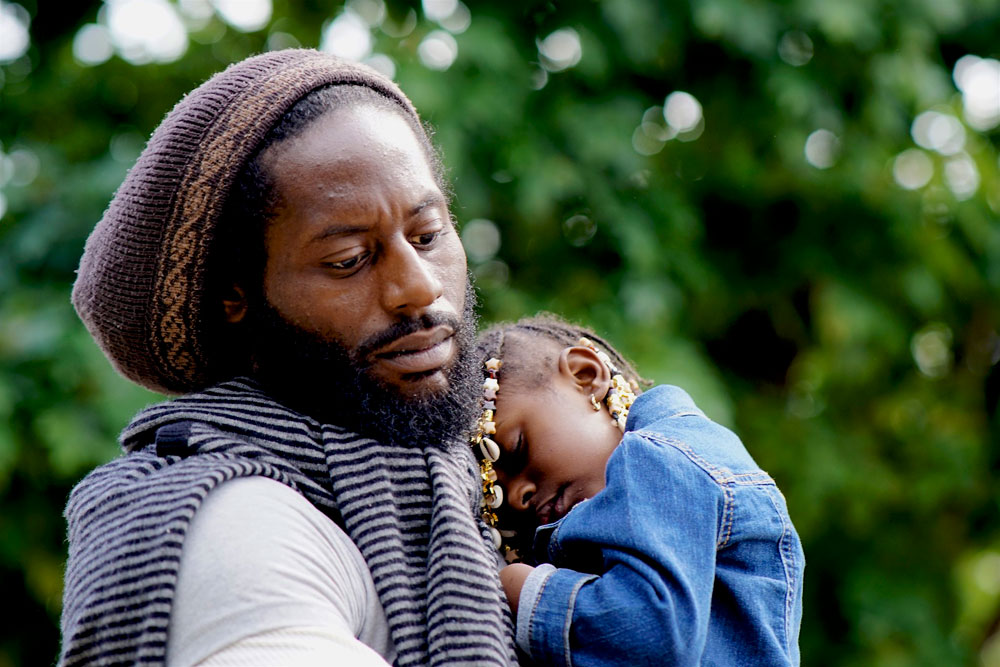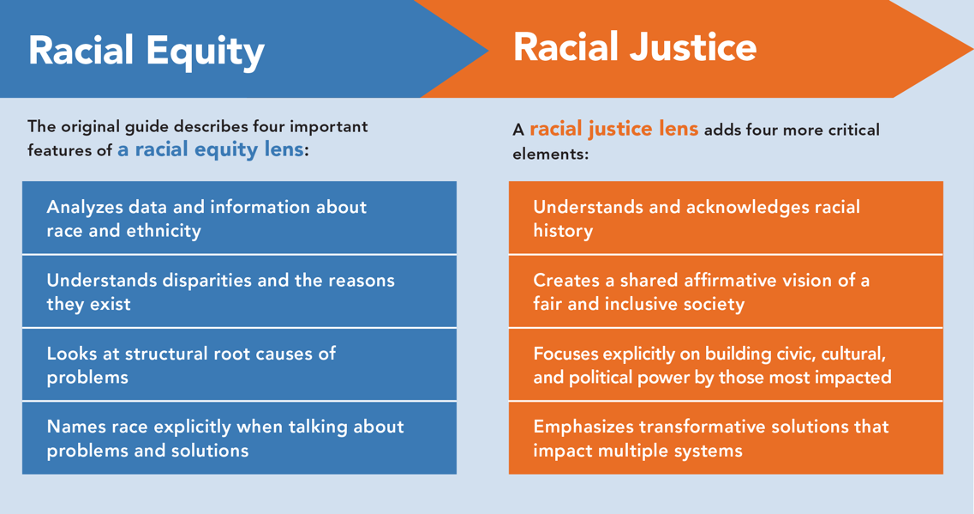
For most of us, COVID-19 global pandemic’s breathtaking impact on the well-being and security of our family, friends, and neighbors and on our economy, healthcare, social services, and beyond has moved from abstractness to a harsh reality. We have all been touched in increasingly serious ways.
Many grantmakers have stepped up, and we have already witnessed many admirable interventions. But in acting quickly and decisively, it is vital that philanthropic responses don’t inadvertently perpetuate and exacerbate existing bias, racial inequity, and injustice through their giving.
This might sound obvious to some who believe they already incorporate a racial equity or racial justice lens in their grantmaking. For others who have not, incorporating racial equity in their giving might seem daunting. Regardless, more than good intentions are required to reach those who will feel the brunt of the pandemic’s impact, especially Black, Native American, Latinx, and Asian American and Pacific Islander communities.
What does a racial justice lens bring?
There is no doubt that everyone—no matter their race, economic, or immigration status, gender, age, or ability—will feel the impact of COVID-19 in some way. But people who are already targeted, marginalized, and underserved will feel the pain more than others. For these communities, COVID-19 comes on top of existing economic, health, education, gender and information inequities, as well as state violence that has shaped their everyday lives.
For example, it is well known that people of color are overrepresented in many vulnerable groups, such as low-wage workers, those without insurance and paid sick leave, the incarcerated, those without homes, and individuals from industries that entail high volumes of interaction with other people, such as caregivers and health care professionals; food, beverage, retail, and travel industry workers; and more.
Additionally, crisis situations such as pandemics, natural disasters, and social flashpoints often amplify racial biases that are deeply rooted in our history. These historically rooted structures, processes, and practices often get in the way of equitable security and opportunity for all.
The country’s largest foundations have a history of earmarking only a fraction of total grant dollars for efforts that specifically benefit people of color—only ten percent in 2016.
These numbers need to be much higher. Although more grantmakers are paying attention to racial equity than was once the case, many of these efforts only tackle part of the racial equity challenge. As we recently reported, uprooting racism that permeates political, cultural, and economic norms requires us to confront power, shift how we distribute our resources, and move toward system-wide transformation.
In particular, as my coauthor Rinku Sen and I have outlined in a report published by my organization, the Philanthropic Initiative for Racial Equity (PRE) earlier this year, we must move from simply pursuing racial equity to implementing a transformative vision of racial justice:

Why the “Who” Matters
Foundations need to give more now to address critical needs rising from the global pandemic. But it is just as important to act thoughtfully and ensure that their solutions truly factor in the following questions: Who shapes the solutions? Who needs more at this moment? Whose work can transform our collective future?
Nonprofits led by and accountable to communities of color have long been tackling the challenges of shrinking democratic practice, privatization, and many other policies that too often proliferate in times of disaster or crisis, as noted in Naomi Klein’s Shock Doctrine. These challenges are also often most pronounced regionally in the US South, where conservative political leadership directly undermines the aspirations of significant Black, Native American, Latinx, and Asian American and Pacific Islander (AAPI) populations. Because they are usually the first and hardest hit, Black and Brown communities often send out the first warning signals and have the most creative responses, even with scarce financial resources.
However, financial disparities persist within the nonprofit sector, and those most quickly able to approach funders with donor pitches and publish thought pieces in leading publications are not necessarily the most impacted by our current crises. The ones closer to communities are busy directly grappling with a broader range of critical needs. Although the larger national, often white-led efforts typically arise from their desire to step up to the needs of the moment, this “stepping up” often positions them for outsized voice, influence, and resources.
Even with the best of intentions, when we don’t take into account institutionalized and systemic racial biases and racism when deciding on grants to award, we increase the likelihood of perpetuating—if not bolstering—the status quo, further disinvesting from while burdening the people and communities we’re aiming to help.
Here are some examples what this could look like for communities of color in responding to COVID-19:
• Ignoring anti-Asian racism
Sign up for our free newsletters
Subscribe to NPQ's newsletters to have our top stories delivered directly to your inbox.
By signing up, you agree to our privacy policy and terms of use, and to receive messages from NPQ and our partners.
We have a history of racializing disease. We’ve already heard racist terms such as “Chinese flu” and “Wuhan virus.” There also has been a reported rise in anti-Asian racism in the US and abroad. And yet, there have only been a small number of explicit funds directly naming the concerns of racist violence and immediate economic impacts on the AAPI community. This is particularly challenging as AAPI nonprofits have been increasingly left out of targeted racial justice focused funding. The Nellie Mae Education Foundation is one of the few exceptions with its “Racism is a Virus Too” fund.
• Under-resourcing small, person-of-color-led grassroots organizations that are deeply embedded in communities struggling the most.
Small grassroots organizations with direct roots, access, and accountability to their communities have been busy taking calls, visiting affected residents, and handing out supplies, while dealing with the challenges of their own families. As a result, they are rarely the first in line in responding to funding opportunities. Rather, they are typically far away from the centers of philanthropic power and purse strings. Without philanthropic support, these grassroots organizations will continue to struggle to sustain much-needed services and leadership in their communities.
Additionally, because these grassroots organizations are often severely underfunded and largely invisible to philanthropic decision- and strategy-making, funders are failing to ground their actions on the wisdom and knowledge of those disproportionately affected by the pandemic. The likely result: philanthropy ends up too often falling short of desired outcomes, while racial inequity and injustice are all too regularly perpetuated.
• Thinking that equality is the same thing as equity in responses.
While most grantee partners will struggle during this period, some are better able to weather the economic storm in the wake of the pandemic in our communities than others. Shifting practices to place less burden on all your grantees can—and should—be done across the board. However, giving in ways that do not consider variations in need, in demand, and in access to other funders means that philanthropic dollars often fail to go where they are most needed.
Rapid response giving with a racial justice lens
Here are three ways that funders can apply a racial justice lens to ensure that COVID-19 crisis support goes towards helping the most vulnerable members of our communities now with an eye towards creating an equitable and just future. These recommendations are adapted from our Grantmaking with a Racial Justice Lens guide.
WHO TO FUND
Fund organizations led by and in deep relationships with Black, Asian and Pacific Islander, Latinx, and Native American communities, including those approaching sexuality, gender, disability, and other critical issues intersectionally. Collectively, these groups have so many of the transformative answers to ensure that our society overcomes the pandemic.
Taking this extra step to thoughtfully and strategically identify these under-resourced but invaluable groups will benefit all communities that we care about. This is also an opportunity to bring in new grantee partners who can have real, tangible impact now and in the future. Here are just a few resources for finding these groups:
- ABFE (formerly Association of Black Foundation Executives) and Asian-Americans/Pacific Islanders in Philanthropy (AAPIP) may have connections or local chapters in your area that could provide recommendations for groups to fund directly.
- Hispanics in Philanthropy, Latino Community Foundation, and Native Americans in Philanthropy (in partnership with the Decolonizing Wealth Project and the National Urban Indian Family Coalition) each have created rapid response funds that you can support.
- Funders for LGBTQ, Funders for Justice (FFJ) and Solidaire Network are maintaining a running list of grassroots groups for and by communities of color and LGBTQ communities working at intersectional justice issues.
WHAT TO FUND
While there is a natural and important need to fund direct service programs in response to the pandemic, it is essential that funders also decisively support the ecosystem of organizations that build the civic, cultural, and political power of communities of color.
Grassroots organizations led by people of color often are quicker to recognize policies and practices that have the potential to undermine democracy, as well as the research we need now to identify and tackle discriminatory practices.
Power-building efforts amplify the participation, decision-making roles, and visibility of people most affected by institutionalized racism. Examples include litigation, policy advocacy, and community organizing for paid sick leave and other protections for low-wage workers, and increased funding of public health infrastructure, especially in rural and urban low-income communities.
Grantmaking with a Racial Justice Lens and Racial Equity Tools offer a list of resources for prioritizing building power in your rapid-response funding.
HOW TO FUND
Fund in ways that support your grantee’s stability and growth, while building trusting relationships with grantee partners.
- Increase payout and give in the form of flexible, multiyear grants that allow grantee partners the freedom to determine how to deploy these funds quickly and effectively to meet community needs.
- In addition to grants, ask groups what other capacity-building support they need as a partner who is deeply invested in their success.
- Don’t wait for people of color-led movement-building organizations to find you. Seek them out and make it easy for these organizations to access your funds and reduce reporting burdens after the grant is made.
Approaching your grantmaking with a racial justice lens is not just for times of crisis. By employing this lens at all times, funders can unlock long-term transformational impact and strengthen the community-wide infrastructure needed to foresee, respond to, and avert potential damages from crises like the COVID-19 pandemic.
The author would like to express her thanks to Yna C. Moore for her editorial support.








